Finding Inspiration in the Life of an Artist – by Tempest Wright
"The question is not what you look at, but what you see." - Henry David Thoreau
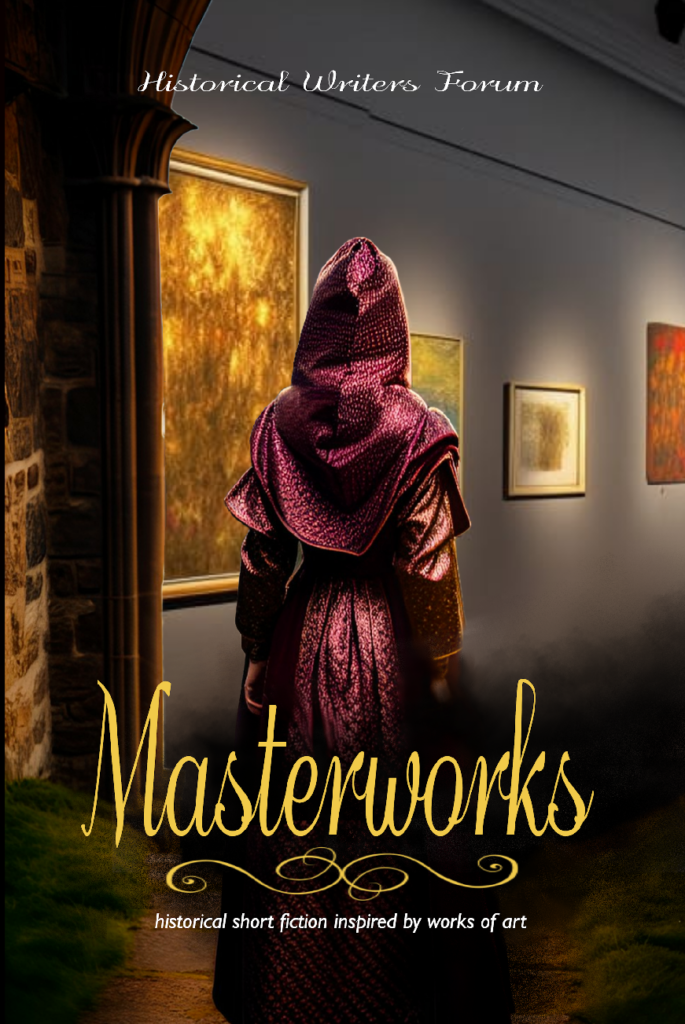
Inspiration is used so generally in the artist’s community. We use it most often to describe what possesses us to create. Masterworks has its basis in inspiration; prompting eleven authors to share not only what they looked at, but what they saw behind numerous works of art. It’s amazing what you can see if you look hard enough. And while my contribution to this thrilling anthology sidelines some major events in history, for this blog post I wanted to share what I saw behind the artist himself, and why it possessed me to create one of my favorite characters from A Good and Proper Lunacy.
My main character centers on Hughes Merle, and to be honest, while I enjoy writing historical fiction, I very rarely take on actual historical characters as the main protagonists, and definitely not in first person! But while his most disturbing painting (The Lunatic of Etratat) is the basis for this story, there was much in Hughes art to betray something of himself, and enough of a gap in his historical life for a fictional story to fill in the blanks.
The Power of Inspiration
Hughes Merle’s paintings follow a style widely sought out in the 19th century art world, which emphasized naturalism and realism. Along with portraits, you’ll find numerous scenes featuring maternal love, and children. These were the best-selling of his art. Why wouldn’t they be? In one Hughes shows the impish sweetness of an infant in the arms of their mother, and in the next he bespeaks the very real drudgery of learning a lesson too many in Les Orphelines. (Haven’t we all been there?)
With his brush, Hughes seemed intent on catching souls and inner emotions, making them both a mystery and a story to be told on his canvas. This is why I find his work so provocative.
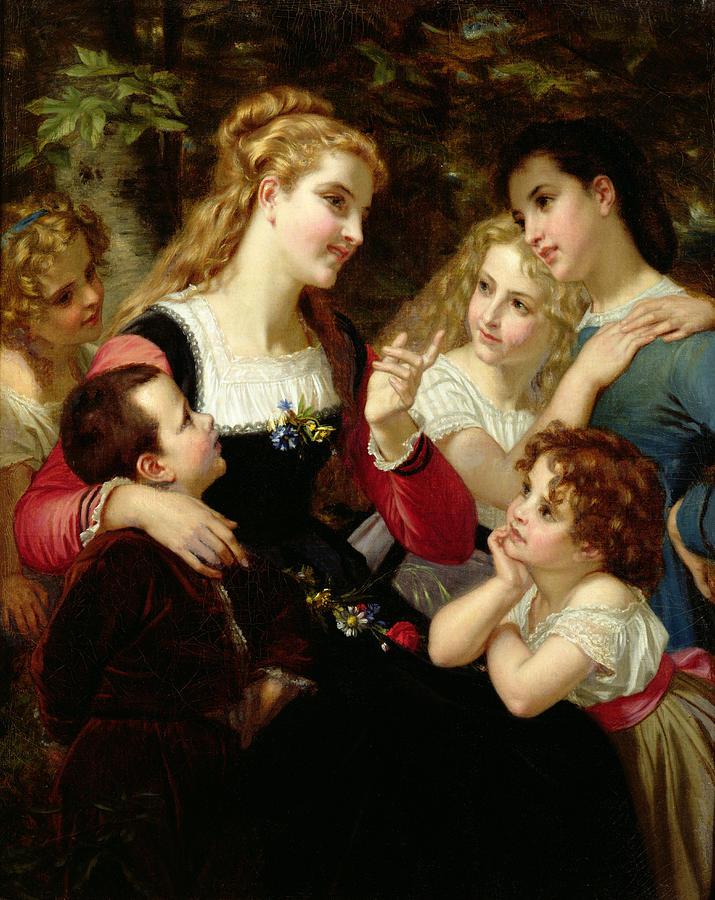
Finding His Next Inspiration
The Lunatic of Etratat is not the only painting I snuck into the story. At the end, Hughes is speaking with an auburn beauty whom he had sketched as she told stories to children. Her inspiration came from this woman depicted in Hughes Merle’s painting The Storyteller. Of them all, it is one of my favorite paintings, and I had to put it somewhere!
However, living in 19th century France was not easy. Power changed hands multiple times in Hughes life, sometimes allowing him artistic freedom, and other times keeping his family in the shadow of rebellion and war. How Hughes portrays women and children under bleak circumstances tells us that he must have seen a great deal of misused power, whether through isolated incidents or in society as a whole.
He paints hopeless abandonment in L’ Abandonee ; a pleading in Un Mendiante, and fear and hunger in A Good Sister. Hughes captured the truth behind the forsaken, and gave them power their voices might not otherwise have had.
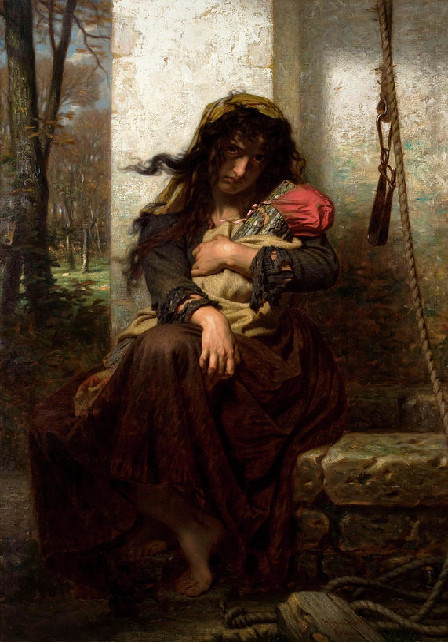
This passion and understanding is a skill not inborn, but learned. This is why Dr. Abbot was created. Inspiration, in it’s most powerful form is often given through a person. Unlike the inspiration of a painting, a song, or even a moment, this kind of influence can change one’s life. Such was Dr. Abbot’s influence on Hughes. Dr. Abbot may be fictitious, but his inspiration could be all too real in helping Hughes see the lives and circumstances he painted.
The Inspiration of Dr. Raymond Abbot
When you first meet him, Dr. Abbot seems about as inspirational as a rock. Dull, unambitious, and not in the least as passionate as Hughes’ fictional brother, Gabriel.
Finding the lunatic in Etratat begins to skew Hughes’ image of this apathetic Englishman. His defense of Giselle shows Hughes that the doctor not only can surprise him with sensitivity, but be moved to drastic measures – measures that initially scare Hughes as a child.
Through the changes Hughes witnesses in his brother and circumstance, the doctor is allowed to shine; while ironically remaining invisible. It’s only near the end that we find out Dr. Abbot was the “drunk” that led Hughes home. That as he made bold and dangerous decisions he endeavored to limit the consequences for those around him. By the end, a respect and admiration for the doctor is engrained in Hughes and forever alters him.
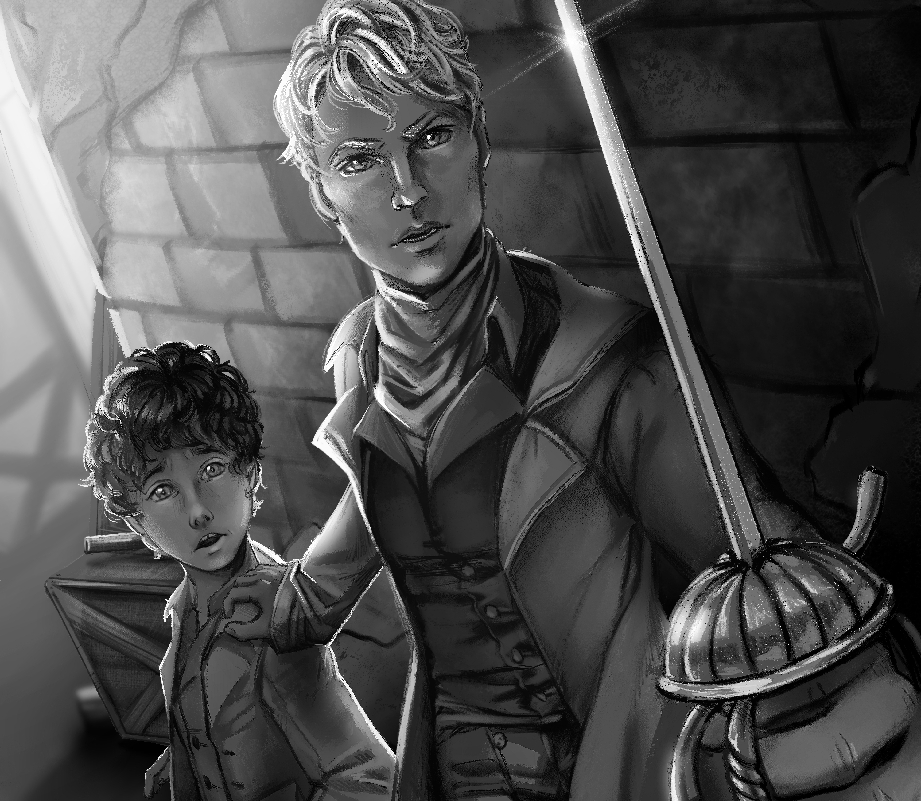
There are many more secrets to Dr. Abbot. Didn’t he tell Hughes, “a drawing for a secret”?. Would you like to know one of them? Here’s a correspondence I contrived between the two.
Dear Hughes, I hope this letter finds you in good spirits. I was quite satisfied to receive the first samples of your artistry and recommend nothing but further practice, and that you be perceptive to the light. Your hand is very fine. I was amused, Hughes, about your question, but am fully prepared to fulfill my end of the bargain. I'm afraid I will disappoint you with the admission that it was through no feat of the supernatural, nor of any burst of mythical heroic courage that I came through that night. That being admitted, I have often given thanks for the fortunate turn of events that night. When you left me in the alley, as well you should have done, I did not expect to wake again. My wound was serious and without help there was little chance of me surviving till morning. But the barricades found me on the Rue Reaumur and a young rebel, seeing my coat felt in need of it. When he jostled me, I woke and haggardly offered the coat in exchange for help to the nearest surgeon. The unlucky chap was well enough to oblige, and it was he whom you and Giselle wept over in the aid station. The good man knew of a skilled but unacclaimed surgeon in one of the villainous streets nearby, and dragged me to him. By then, there was little hope of pulling through, the movement making my wound bleed and my head spin. There would not have been a chance if not for the most fortuitous circumstance: the surgeons room was above an abandoned ice house, which he used well. Though I can remember only faintly the sting of cold on my skin, I was bathed in ice to slow the bleeding as my wound was seen to. I woke in a coffin - with a terror well beyond telling. But it seems even the surgeon doubted I would wake, and had diligently prepared for my burial, but was good enough not to seal the coffin until my demise. Thankfully it was not needed - but I deny you should ever have such a rude awakening. There you are Hughes. Alas, there was no miracle, nor any heroic effort, except on the part of the plucky but perhaps hasty surgeon. I pity your loss of mystery and wonder, but I confess I have not the imagination to oblige such. Be well Hughes, and send my regards to your parents and remember me well to Gabriel in your next letter to him. I hope it will not be long before he is home. Your friend, Dr. Raymond Abbot
While he credits himself with no imagination, Dr. Abbot is quite capable of inspiring a very real legacy. Such inspiration is not shouted from platforms, nor found basking in the limelight of power or fame. It’s gentle, quiet, but capable of great change.
Inspiration in a Contented Life
Dr. Abbot is fictional. But could there have been some influence in Hughes life close to it?
Though his life was riddled with numerous uprisings and war, it was never reported that Hughes Merle was ever a rebel, supporting coups or raising his fist in a mob. Quite surprising for the century and volatile city in which he lived. Through his paintings, Hughes showed the softest and most vulnerable of society; shining a light on those who paid the heaviest price in conflict. But that was by no means the end to his influence.
With what little information is available on Hughes Merle, it seems he took the roles of family man, friend, and mentor about as seriously as he did artist. Henriette Grosso and Elisabeth Jane Gardner – the artist of In the Woods and Cendrillion – were privileged to claim him as a mentor, and you can see his influence in Elisabeth’s most famous pieces.
Even in the height of his fame, as he displayed his works in numerous salons of Paris, it is never mentioned that he took a mistress, but rather when he moved, he was with family. His son, Georges Hughes Merle, became an artist himself. So good at imitating the style of his father, his first unsigned paintings were mistaken for his father’s brushstrokes; proof that Hughes himself continued his own legacy of inspiration. Where he got his own inspiration to live the way he did…remains a mystery.
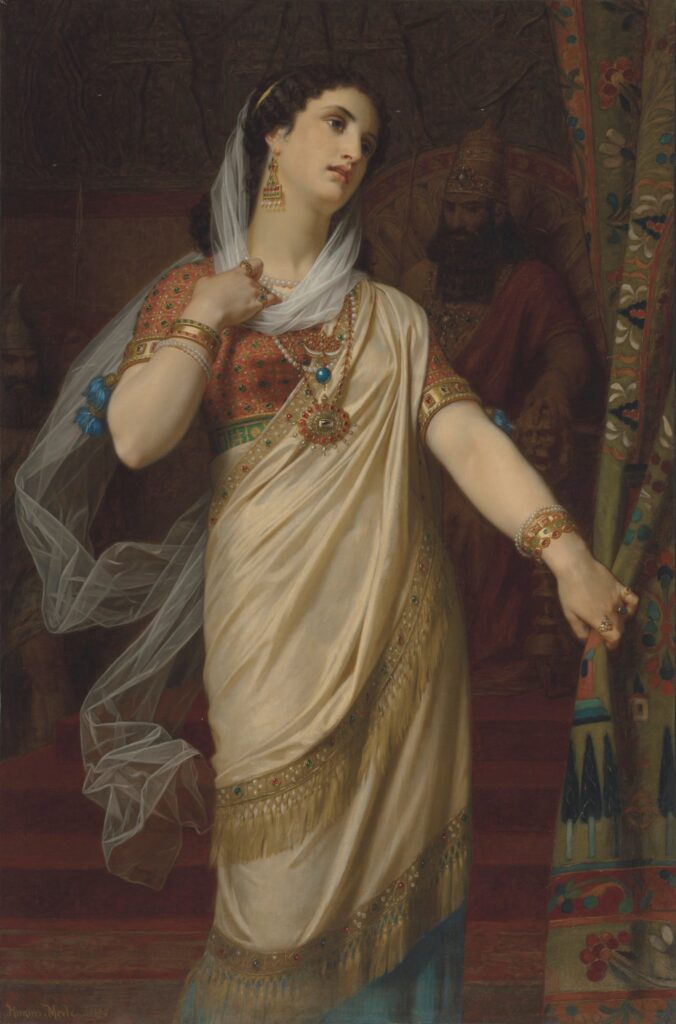
The story A Good and Proper Lunacy, all in all, is a story of love. Love is perhaps the greatest legacy you can leave wrapped around the people closest to you, and the greatest lunacy to which anyone can aspire.


Leave a Reply